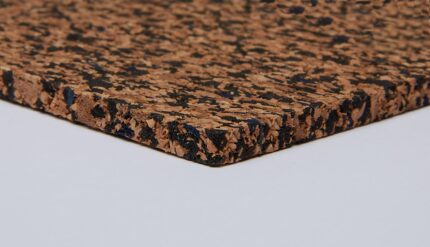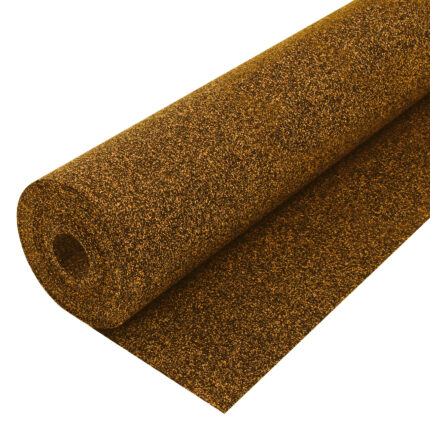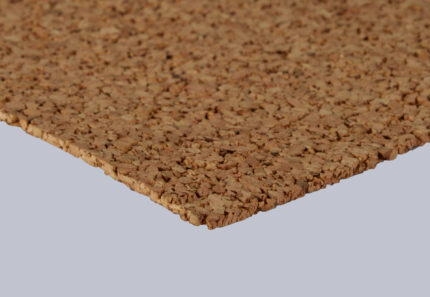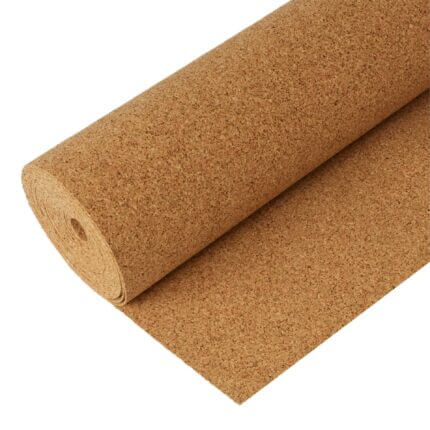Cork Underlay
Cork underlayment is lauded for its eco-friendly properties on top of the many other benefits it gives to your flooring. This material is very versatile and is made of natural and renewable materials. On top of that, it’s a hygienic option that is well-loved by allergy sufferers.
Learn more about Cork Underlay
Cork underlayment is lauded for its eco-friendly properties on top of the many other benefits it gives to your flooring. This material is very versatile and is made of natural and renewable materials. On top of that, it’s a hygienic option that is well-loved by allergy sufferers.
Having natural cork underlay means having an underlay made of material that is harmlessly gathered from the bark of cork oak. This doesn’t harm the tree at all, which is why it’s a renewable and green solution. The harvesting process is called “cork stripping”, and promotes healthy growth of oak. It is then processed into a cork underlay.
The underlayment itself is made up of natural cork aggregate and ecological binder. It is compatible with many types of flooring, which we detail later. That being said, cork underlay itself is available in several different forms, the following being the most popular:
- Cork Roll – Suitable for covering large areas quickly.
- Cork Panels – Smaller, pre-cut sheets of cork, boasting flexibility and are suitable for smaller spaces.
The following are the many benefits of Cork Underlay:
- Thermal Insulation – Cork’s composition gives it high insulation parameters, ensuring that your floor is warmer and less heat escapes your room.
- Acoustic Insulation – Cork’s structure reduces impact sound and kills vibrations.
- Comfort – Cork underlay gives a layer of stable cushioning underfoot that adds to the resilience of the flooring.
- Hygenic – On top of being eco-friendly, cork underlay is resistant to moisture, mould, mildew and is a natural insect repellent.
Cork can be used on wood and concrete sub floors.
It’s often believed that cork underlay is best compatible with laminate or hardwood, but there exist three more flooring types that it goes with.
Laminate
Laminate flooring has the beauty of wooden floors at a lower price. Laminate is generally a cold flooring type, however, and it can produce higher levels of noise when walked on. Cork Underlays are a good counterbalance to this, as they can provide thermal insulation and reduce the noise. Locking joints can be fairly fragile flooring, with an imbalance in the subfloor possibly causing damage. Furthermore, cork underlays’ moisture barrier protects the laminate from moisture damage, which it’s particularly vulnerable to.
Hardwood
Hardwood has a natural warmth and an elegant aesthetic but is a hard floor. Cork Underlayment can improve comfort through its thin layer of cushioning material, as well as minimise noise transfer between rooms. Whilst its levelling ability is less crucial than with laminate, you will still experience increased stability in your wooden boards.
Linoleum and Vinyl
Linoleum and Vinyl Flooring are hard materials. Cork underlayment gives a layer of cushioning, as well as fights the cold through thermal insulation. It’s worth opting for thickness with these floors too, though compare them to manufacturer recommendations, as vinyl in particular can be bouncy with underlayment that’s too thick.
Ceramic Tiles
While it’s possible to use cork underlay with ceramic floor tiles, the typical approach with ceramic tiles is to install them directly onto a rigid surface or using a backer board like cement board for added stability and durability. This minimises the risk of tile cracking and ensures a stable, long-lasting installation. If you’re considering using cork underlay with ceramic tiles, it’s recommended to consult with a professional tile installer to ensure proper techniques and materials are used.
Natural Cork
Natural Cork Flooring with a natural cork underlay is as fun as it is practical. It essentially enhances all that’s already good about the material, such as its warmth, its sound quality and its eco-friendly nature. Overall, cork flooring is a green material with little in the way of inconvenience.
The following rooms are the ones in which natural cork underlay will shine brightest:
- Bedroom and Living Room – Cork underlay offers comfort with its thickness, retains a lot of heat and kills sound from escaping through the floor. This makes it a great choice for these rooms, as they are places to relax.
- Home Offices and Playrooms – The home office requires silence. The acoustic insulation offered by cork underlay allows this, and noise from the playrooms can also be cushioned. Cork underlayment’s dimensional stability will also protect your flooring from damage, as things tend to be dropped a lot.
- Kitchens and Bathrooms – Tiles can be cold, but having a cork underlay means a lot of that cold will be absorbed into the material, sparing you any shocking temperatures from concrete subfloors against your feet. Cork’s moisture barrier is a winner here as it provides a barrier between your floor covering and subfloor.
Yes, however, this comes with a caveat. Most cork underlay is made with considerable levels of insulation. That being said, some thinner and less dense cork underlays typically have a lower ToG Rating (the metric for thermal insulation, with low ToG being low insulation, allowing heat to pass through it more effectively).
It’s also important to take into account your flooring. If you have cork flooring, for instance, it’s likely not going to work out for the reasons mentioned already. However, plenty of floors, such as LVT, facilitate underfloor heating well whilst also being fairly warm floors. An example of an appropriate underlay is the Quiet Roll Universal for LVT Flooring.




